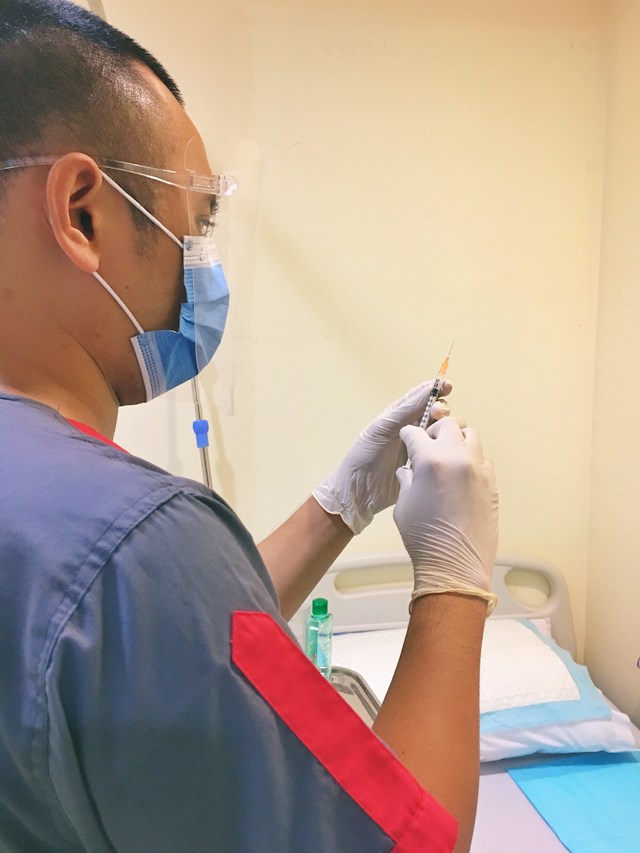Poliomyelitis, sometimes known as polio, is a highly contagious and possibly fatal virus illness. It usually affects kids under five years old and can result in paralysis and occasionally even death. Since effective vaccinations have been developed, polio has all but disappeared from the planet. This thorough guide will cover the following topics: the varieties of polio vaccinations, their value, who should receive them, who should avoid them, and the wider implications of immunisation for the health of children and the general population.

The Polio Vaccine: An Essential Defence Against a Paralysing Illness
The poliovirus is the illness that causes polio. It mostly spreads by the fecal-oral route and can cause paralysis and, in extreme situations, even death. A revolutionary turning point in the area of public health has been the development of polio vaccinations, more especially the oral polio vaccine (OPV) and the inactivated polio vaccine (IPV). Why vaccination against polio is so important:
Who Is Eligible for the Polio Vaccine?
Infants and young toddlers are the main target population for polio vaccinations. To guarantee complete protection, many dosages are given. Doses at two months, four months, six to eighteen months, and a booster at four to six years old are included in the suggested regimen for polio immunisation.

Polio vaccine types
There are two main types of polio vaccinations, each having unique qualities:
IPV, or inactivated polio vaccine
IPV is given intravenously and is derived from poliovirus that has been killed. Most people, including those with compromised immune systems, may safely use it. In nations that have already eradicated wild poliovirus transmission, IPV is the recommended option for both the first vaccine series and booster shots.
OPV, or oral polio vaccine
Oral administration of OPV, a live weakened poliovirus, is the mode of administration. OPV is very successful in inducing immunity and is commonly used in mass vaccination efforts in areas where polio is still endemic. It can, however, result in outbreaks of vaccine-derived poliovirus (VDPV) and presents a rare risk of vaccine-associated paralytic polio (VAPP). Consequently, several nations have transitioned from OPV to IPV.
Why Does Every Child Need to Be Immunised?
The polio vaccine is but one component of the overall immunisation programme. The following are the main arguments in favour of vaccinations for all children:
Preventing Fatal Illnesses: Immunisation shields kids from several infectious illnesses, many of which have a high death rate. Thanks to vaccination, illnesses like whooping cough, diphtheria, and measles have been contained and their occurrence has decreased.
Herd immunity: When a large percentage of a population receives vaccinations, the transmission of a disease is greatly inhibited, which helps everyone in the group—even those who are too old or sick to receive vaccinations. Herd immunity is the idea behind this, and it works wonders to stop epidemics.
Disease Eradication: Immunisation campaigns have been effective in eradicating certain illnesses, such as smallpox. The potential of vaccination to eradicate diseases from the face of the planet is demonstrated by the almost complete elimination of polio.
Economical Health Intervention: Vaccination is an economical means of safeguarding the general public’s health. It saves lives and healthcare dollars by averting the need for costly procedures and hospital stays.
Preserving Future Generations: Immunising children serves to safeguard future generations’ health and welfare. Timely vaccination helps prevent hereditary disorders like rubella, which can cause damage to unborn offspring.
The Influence of Polio Vaccination Worldwide
The importance of the polio vaccine goes beyond personal health. It has been crucial to worldwide public health for a number of reasons:
Near Total Elimination of Polio
The wild poliovirus has almost completely eradicated because of the coordinated efforts of governments, partners, and organisations like UNICEF and the World Health Organisation (WHO). This development demonstrates the value of international cooperation and the efficacy of immunisation.
Stopping the Worldwide Spread
Polio is borderless. In the absence of immunisation, it may travel swiftly between nations. We stop the virus from spreading again by upholding high vaccination rates in regions where it is still present.
Insights for Upcoming Epidemics
When it comes to reacting to other health catastrophes, like the COVID-19 pandemic, the infrastructure put in place for the eradication of polio, including surveillance and vaccine distribution methods, has proven invaluable. Programmes to prevent polio teach important lessons about readiness and reaction.
Developing Health Systems
In many nations, polio immunisation programmes have improved healthcare infrastructure. They have enhanced community involvement, cold chain infrastructure, and healthcare accessibility, all of which may be used to support additional health initiatives.
Advantages in Social and Economic Domains
Eliminating polio has significant positive social and economic effects. It lowers the lifetime medical expenses for polio survivors and frees up funds for other health and development projects.
Vaccinating against polio is a worldwide effort with far-reaching implications, not just an issue of personal health. We’ve almost completely eradicated a once-feared illness thanks to vaccination, providing hope and inspiration for what can be accomplished with hard work, devotion, and scientific ingenuity. Vaccines are an essential component of public health and a crucial weapon in ensuring the health and welfare of present and future generations, as we strive to eradicate polio. Ensuring that every kid receives the life-saving protection offered by polio vaccinations and other immunisations is our common obligation.
You may also like:
Is Infertility Holding You Back? Here’s What You Need to Know
Headaches: Quick and Easy Relief at Your Fingertips

